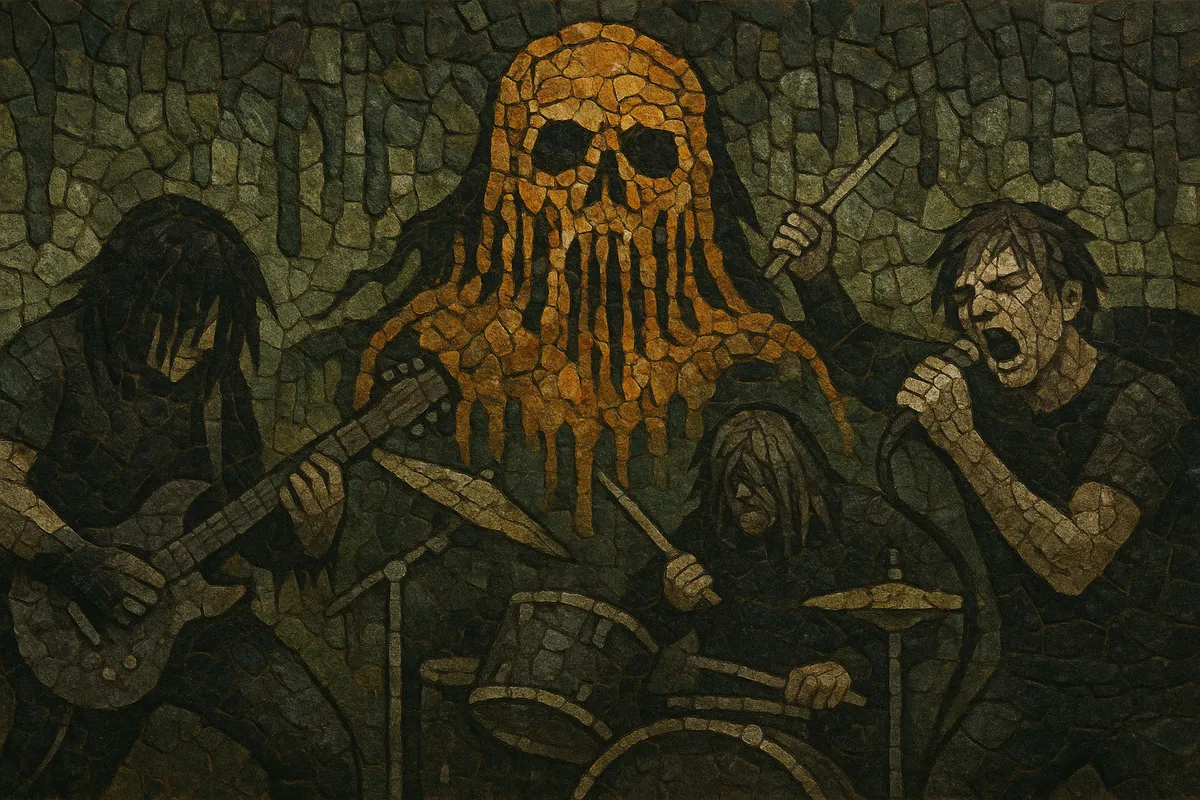Sludge metal is a hybrid of doom metal’s slow, downtuned weight and hardcore punk’s raw aggression. It emphasizes thick, overdriven guitar tones, throttling bass, and drums that lurch between trudging slow-motion grooves and ragged mid‑tempo blasts. Vocals are typically screamed, barked, or anguished, often buried slightly in the mix to feel abrasive and cathartic.
The style took shape in the late 1980s United States—particularly the Pacific Northwest and the American South—where bands fused Sabbath‑like doom riffs with the DIY harshness of hardcore and the scabrous textures of noise rock. Lyrical themes commonly explore addiction, despair, social decay, and Southern Gothic imagery, delivered with an intentionally gritty, unvarnished production aesthetic.
Sludge metal coalesced as bands merged doom metal’s slow, monolithic riffing with the feral immediacy of hardcore punk. The Melvins (Washington) slowed punk to a tar‑like crawl and magnified volume and sustain, while early Southern groups absorbed bluesy, swampy grooves. This cross‑pollination created a sound that was both oppressive and cathartic.
New Orleans became a crucial hub: Eyehategod’s feedback‑soaked nihilism, Crowbar’s concrete‑heavy riffing, and Acid Bath’s psychedelic grime defined a distinctly Southern, blues‑tinged strain. Elsewhere, Buzzov*en and Grief pushed the music into even harsher, more misanthropic territory. In parallel, Neurosis (California) evolved from hardcore toward atmospheric, ritualistic heaviness, laying groundwork for post‑metal.
The style branched globally: the UK’s Iron Monkey channeled caveman brutality; Japan’s Corrupted delivered extreme-length dirges; the U.S. Southeast spawned Kylesa and a Savannah scene that wove in psychedelia and dual‑drummer propulsion. Some bands folded sludge into progressive, stoner, and post‑metal frameworks, bringing broader dynamics and textural experimentation.
Sludge metal’s DNA—downtuned heft, punk ferocity, and noise‑kissed texture—shaped post‑metal, informed the heavier side of stoner and Southern metal, and even bled into grunge’s early formulation. Its ethos remains proudly raw: volume, feel, and emotional bluntness over technical polish.
Use two downtuned electric guitars (C Standard, Drop B/A), bass with a thick, fuzzy or overdriven tone, and drums with big, roomy shells. Aim for saturated, sustaining distortion (fuzz/overdrive stacks), ample feedback, and loud, sustaining amps.
Favor slow to mid tempos (roughly 60–110 BPM). Let riffs “drag” slightly behind the beat to feel heavy. Use lurching half‑time grooves, swung or blues‑leaning accents, and tom‑heavy fills. Keep time signatures mostly in 4/4, with occasional bars of 2/4 for jarring punches.
Build riffs from power chords, minor pentatonic and blues scales, chromatic slides, and tritone/dissonant intervals. Embrace repetition and drone, using open strings and sustained chords to create weight. Layer feedback swells, pick scrapes, and noise to glue transitions.
Deliver harsh, shouted, or tortured vocals. Lyrics can confront addiction, trauma, nihilism, societal rot, and Southern Gothic imagery. Keep phrasing rhythmic and percussive; let lines ride the groove rather than chase melodic hooks.
Structure songs around cyclical riffs with gradual textural shifts: add second‑guitar countermelodies, octave layers, noise interludes, and dynamic drops to near‑silence before slamming back in. Err on raw, live‑feeling takes; minimal quantization preserves the human push‑and‑pull.
Prioritize room mics and natural drum bleed; mic loud cabs close and at distance for body and air. Roll off some highs to avoid brittle fizz; boost low‑mids for sludge thickness. Don’t over‑polish—grit and imperfection are part of the aesthetic.


